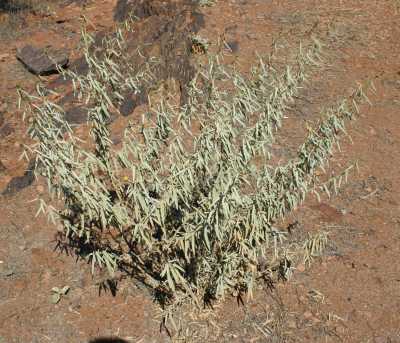


 |
 |
|
|||||
 |
|||||||
| |
|
|
|
|
|
||
|
|
|
|
|
|
|
|
|
|
Sida petrophila
rock sida The rock sida can be found scattered throughout Fowlers Gap near water courses as sticky (with sticks, not gluey), spindly stalks and often far fewer leaves than the example here. It prefers stony sites with thin soils close to drainage depressions, often with regolith carbonate accumulations, but can also occur along water courses on the alluvial plains. The rock sida is an erect, spindly perennial forb or small shrub. It varies in form between eastern and western Australia and is considered by some to be part of the single variable species S. calxhymenia, which has a differently shaped calyx.
Bark: branches are hairless and streaked with red, bark smooth
and lineally striated. |
  |